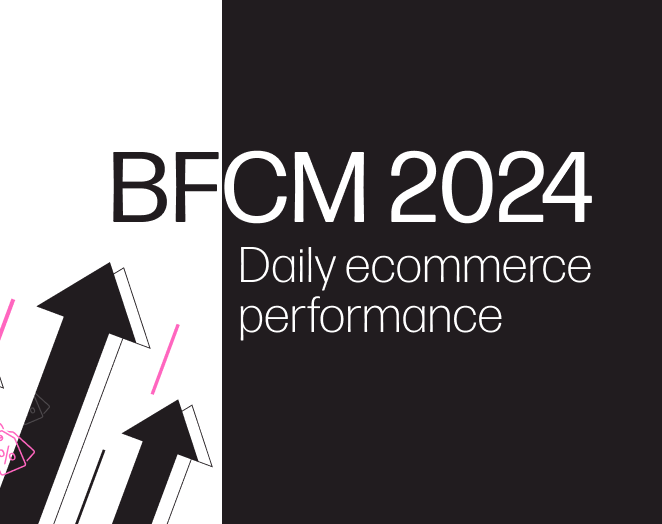The Future Forecast: Ecommerce Trends for 2025
As we approach 2025, the ecommerce landscape is evolving at an unprecedented pace. From groundbreaking technologies to shifting consumer behaviors, businesses must stay ahead of these trends to remain competitive. In this article, we’re exploring 2025 ecommerce trends that will drive success for online retailers and online stores.
The Amazon effect: From loyalty to membership
First up: membership programs.
Amazon’s Prime model has rubbed off on a bunch of retailers lately, and in the last year, we’ve seen notable players launch similar fee-based programs, such as Target with ‘Target Circle’ (at $99/year).
In 2025, we’re expecting more ecommerce brands to launch similar programs, giving shoppers added benefits in exchange for a yearly up-front fee (think free delivery, free returns, early access to sales, and more).
There are now more tools on the market to support this, with the likes of Inveterate (for Shopify brands) and others, that are likely to scale. So expect more subscription models and customized loyalty in the DTC world this year.
A bigger appetite for A/B testing
The sunsetting of Google Optimize back in 2023 made for some unhappy marketers—but consequently drove growth for many paid A/B testing vendors. In fact, the global A/B testing market is projected to touch 1.82 billion USD by 2032 (having been valued at 0.68 billion USD in 2023).
Now, with more competition in the market, more affordable solutions have arisen, making A/B testing all the more accessible, especially for SMBs.
Such solutions have gotten smarter too, offering more automation and pre-built experiences to merchants. And with ad spend a never-ending battle, the need for landing page optimization is going nowhere in 2025.
AI agents: Meet your new best friend
Of all the AI breakthroughs as of late, AI agents are one to watch. We expect, before too long, these intelligent assistants will be able to manage the entire strategy and execution of all ecommerce-related business functions.
Picture a tool that analyzes your store’s conversion rate, as well as market trends, then optimizes your merchandising, suggests next season items to buy—all while creating a Youtube tutorial to boost organic traffic.
It could come quicker than you think!
From keywords to context: the vectorization of ecommerce search
When we look at ecommerce technology, one noticeable shift we’re seeing is how traditional, keyword-based search engines are being enhanced by ‘vector’ models.
You see, traditional search engines can lead to 0 results pages if there aren’t any matching keywords in a user’s query, or within synonyms deliberately configured to mitigate these.
Vector search, on the other hand, can identify related products to a given query without requiring exact text matches. This means more relevant results being pulled through, and fewer 0 results pages. So we anticipate more adoption of vector search models this year for better online shopping experiences.
Shopify to take a bigger piece of the enterprise pie
Despite compelling case studies of large DTC players on the ecommerce platform Shopify Plus (Kylie Cosmetics and Fashion Nova, to name a few), there’s still been hesitancy in the market as to whether the platform is fit for enterprise.
But that’s a sentiment we saw change in 2024.
Last year, Shopify’s enterprise positioning became a lot more respected. Gartner, IDC, and Forrester all ranked the platform as a leader within enterprise.
And with Shopify’s general customizability, flexibility, and recent aggregation of their cross-border, B2B, and POS functionalities (making growth a whole lot simpler), we can see why they’re a compelling choice for large-scale businesses.
A number of big names jumped on the platform last year (Barnes and Noble, QVC and many ‘mall brands’ like Reebok) and we expect more to follow in 2025.
An ongoing drive to streamline tech stacks
One trend we’ve seen get a lot of ink lately is tech stack consolidation. We expect this will remain front-of-mind for many ecommerce brands this year, especially in Europe, where many regions are facing economic pressures.
Aside from the obvious cost decreases that having a leaner tech stack brings, brands are also seeking less complexity through fewer tools and simplifying the management of different areas of their websites.
Tech paves the way for international expansion
Another not-so-new (but still prevalent) trend is internationalization. Of course, ecommerce brands have long been able to sell internationally, but not without complexities (currency conversion, language localization, local payment methods, to name a few).
Modern technologies (namely Shopify Markets), however, have removed many barriers to international expansion. Many US brands who sold exclusively to the US and Canada, for example, now have the rest of the world at their fingertips.
Similarly, tech like Nosto enables brands to handle the complexity of language-currency permutations with ease. An ecommerce merchandiser could use Nosto to optimize their French language site for France and apply the same strategies to other french-speaking accounts like Canada—if they wanted to.
The technology is sure fit to facilitate global expansion in 2025. And internationalization remains front-of-mind for brands as they continue to review their strategies (prompted by possible tariffs on the importing and exporting of goods).
A growth curb for Chinese marketplaces
Speaking of international ecommerce, Chinese marketplaces have seen explosive growth in recent years. Retail giant, Amazon, even launched ‘Amazon Haul’ at the end of last year (where all products are priced at $20 or less) in a bid to fend off their competition.
However, mounting political pressure is likely to cause a stint to the growth of Chinese marketplaces this year. Shein and Temu in particular have become lightning rods for criticism, with their environmental impact, labor practices, and product safety coming into scrutiny.
Reports at the end of last year highlighted how the EU is preparing to crack down on Shein and Temu’s cheap imports, while the US is proposing new rules to curb their packages.
Content is king: specifically, short-form video
You’d be living under a rock if you didn’t know that short-form video is the dominant content type. But what started as personal entertainment, soon became a marketing must-have.
Today, many brands are tapping into the big 3 (TikTok, Instagram Reels, and YouTube Shorts) to create punchy videos that grab attention and generate reach amongst their audiences.
But that’s not all. More and more, brands are also piggybacking the videos of other creators—showing up in the comments to cleverly include their brand in the current conversation, and capitalize on the virality of others’ content. It seems that influencer marketing and User-Generated Content (UGC), is here to stay.
With attention spans only getting shorter, short-form video’s no fleeting trend. The question for most brands is no longer whether or not to use these platforms, but rather how’s best to use them for their specific brand.
A new challenge of brand visibility within AI tools
For years, marketers have worked tirelessly to get their brands visible on Google. But now, Generative AI has reimagined the way people search online (including the way they search for brands and products).
Our research in late 2024, for instance, showed how a number of consumers planned to use ChatGPT and other Generative AI tools for holiday season/gift shopping for the first time.
This shift in behavior means that, for ecommerce marketers, it’s not just about SEO anymore. The new challenge—which, at current, is somewhat of a black box—will be about influencing AI to ensure your brand is visible, and conveyed as you desire.
Can generative AI borrow too much?
Finally, while we’re on the AI train… another topic that’s pricked our ears is the possibility of legal disputes surrounding Generative AI.
Many brands have embraced Generative AI over the last year to improve productivity of content creation. But while it might seem these tools are summoning fresh content from thin air, Gen AI platforms are trained on vast amounts of data— including public sources that could be legally protected.
With the surge in adoption of Generation AI, we anticipate that content creators will begin monitoring channels for their own works, and in some cases, start legal disputes.
Conclusion
The future of ecommerce is brimming with innovation and opportunities for online retailers. By staying informed and adapting to these trends, businesses can position themselves for long-term success in the ever-evolving online marketplace. Whether it’s through AI advancements, global expansion, or embracing short-form content, 2025 promises to reshape how we shop and sell online.




